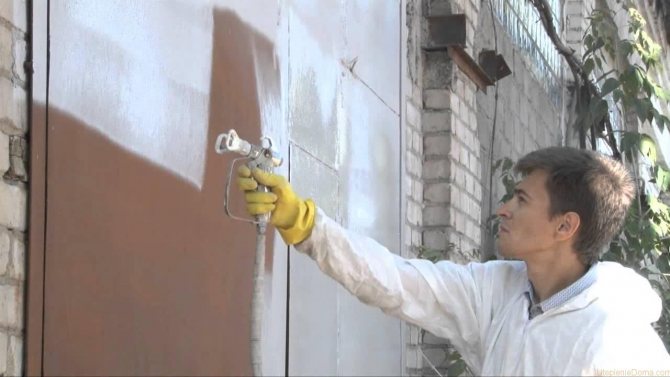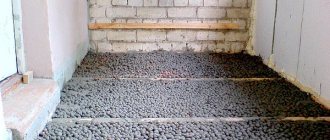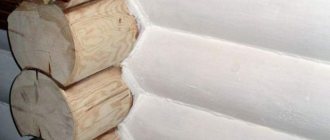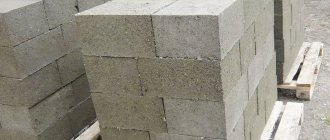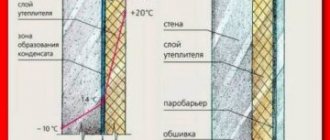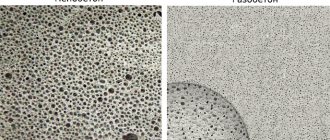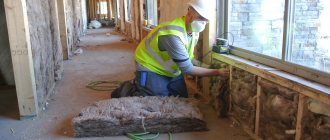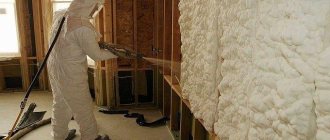What is, how it differs from traditional insulation
In recent years, energy prices have been constantly growing, and the issues of economical heating are directly associated with the maximum insulation of premises and, naturally, with the choice of the most effective insulation. Today, manufacturers offer a wide range of traditional insulation materials that require serious preliminary work during installation and additional materials, without which high-quality and aesthetic insulation is impossible. But along with traditional technologies of additional insulation, great interest was aroused by the appearance on the market of an innovative material - heat-insulating paint, which in some cases can be much more effective.
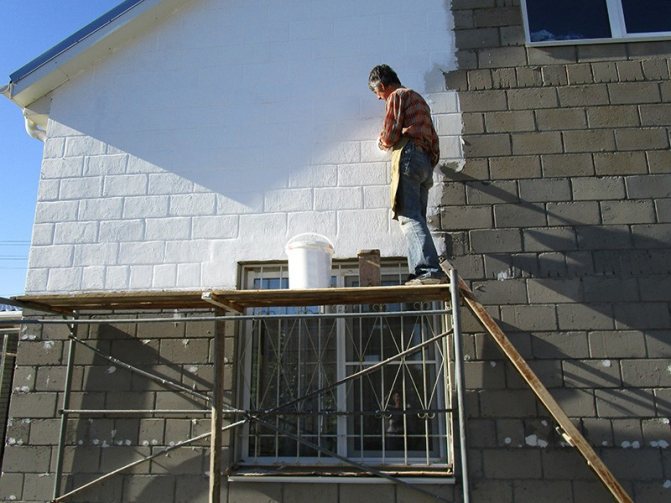
Application of thermal insulation paint for the exterior walls of the house
Thermal insulating paint is a modern universal ultra-thin thermal insulation that prevents heat loss, with functions of protection against fire, mold and mildew. Innovative developments made it possible to bring to the market a product that forms a thin layer of the front surface of walls with a level of protection equal to foam and basalt wool up to 50 mm thick. But we must remember that the issue of additional insulation and stabilization of the microclimate in the premises of an already insulated house is being resolved here.
The paint is produced in two versions: with water and acrylic base, has a liquid or pasty consistency, which promotes uniform application and better adhesion to the surface to be treated. Liquid heat-insulating paint is produced for coating different surfaces, for different operating conditions, with a filler in the form of gas-filled ceramic nano granules, with latex or silicone additives, substances that increase the water resistance and elasticity of the mixture.
Important: When choosing liquid thermal insulation, it is worth paying attention to the annotation, which indicates the areas and conditions of use, as well as all the main operational characteristics!
To insulate a house from the outside or from the inside with mineral wool and foam, it is necessary to purchase additional materials, mount a wooden or metal-profile frame, install insulation and sheathe with decorative materials inside and install moisture-resistant finishing material (siding, lining) outside. This requires additional costs for the payment of the work of the masters and the purchase of materials, but all the difficulties of such insulation can be avoided.
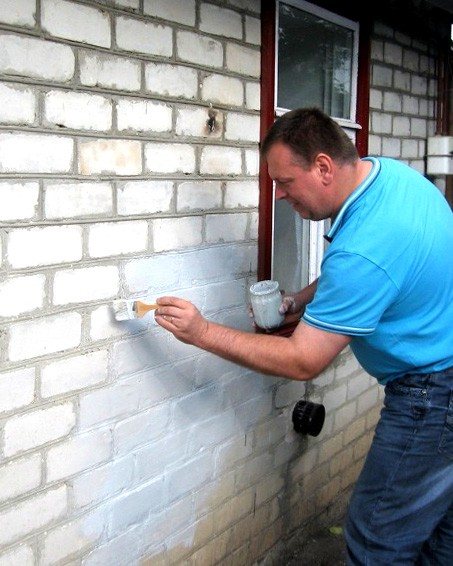

Application of thermal insulation paint for the exterior walls of the house
It is enough to use a unique heat-insulating paint with a composition that makes it an indispensable tool for insulating various surfaces. The advantage is that the liquid insulation can be applied independently using a special spray and a brush in inaccessible places. At the same time, the composition of the paint is so plastic that it lays down very evenly even under a non-professional's roller. Thermal insulating paint has the ability to visually compensate for irregularities and bridging microcracks and interacts well with pigment dyes. But not every manufacturer.
If you are interested in getting acquainted with high-quality acrylic paints, we suggest you follow the link
View all products in the category
In order not to fall for low-quality products or counterfeits, it is necessary to determine the quality, and for this, keep in mind the following features of nano-paints:
- the presence of ceramic microgranules with voids reduces weight with a large volume, therefore a 10-liter paint bucket weighs only 6 kilograms;
- the presence of ceramic microgranules is easily detected by touch, numerous hard grains are felt under the fingers;
- during long-term storage, the mixture is stratified and a significant layer of microgranules forms at the bottom.
Attention! Before starting work, thorough mixing and regular mixing during work is required.
Scope of ceramic insulation
Where other heaters are powerless, ceramic thermal insulation will help.
Recently, ceramic thermal insulation has been used wherever possible, even a program for warming facades is supported at the state level. This insulation is suitable for:
- application to stone and concrete surfaces outside and inside;
- reduction of heat loss in pipelines;
- protection of metal structures.
As you can see, liquid ceramic insulation is a versatile product that is not applicable only to wood. The reason for this is the vapor barrier properties of the material, and as you know, wood breathes and this process should not be disturbed.
In everyday life, this type of insulation is applied to the internal walls, it can cover the heating buffer tank (battery tank), even a bathtub covered with this insulation paint will keep heat longer. Also, if you apply liquid ceramic insulation on the basement floor from the inside, you can solve three problems at once:
- insulation;
- waterproofing;
- vapor barrier.
In this case, the material is suitable as an auxiliary measure, since the main protection of the walls of the basement is located outside. This is bituminous hydro-vapor barrier and extruded polystyrene foam as insulation. When ceramic insulation is used to reduce the heat loss of communications or metal tanks, then additional layers of thermal insulation will also not interfere.
To insulate the attic hatch, you need to choose thermal insulation. Optimally - sheet polystyrene or very dense mineral wool.
You can find the correct calculation of the thickness of the insulation for the floor here.
How to use thermal insulation paint indoors
Insufficient wall thickness, low-quality materials, poor work by builders and other reasons can lead to high humidity, cold bridges, dampness and mold on the walls in the premises of the house, and an unhealthy microclimate is created. In such a situation, it becomes clear that additional insulation of the walls inside the house is required, but the use of traditional insulation is undesirable, since this reduces the usable space of the rooms. Warming with expanded polystyrene is unacceptable, since fire safety decreases and health is damaged due to its pronounced chemical structure. In addition, traditional heaters require additional costs for materials and a complex of complex works.
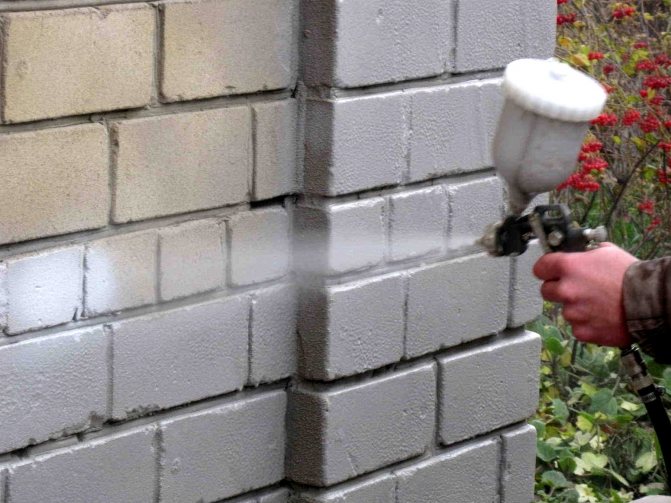

Application of thermal insulation paint for the exterior walls of the house
It is much easier to work with heat-insulating paint, the only thing that needs to be done beforehand is to remove irregularities and putty cracks on the wall surfaces, and after drying, cover them with an acrylic-based primer. Many manufacturers produce a primer specifically for their own heat-insulating paint. Thus, the most effective result of adhesion of the heat insulator to the walls is achieved.
For example, the GOODHIM company produces GOODHIM TERMO paint for facades, plinths, metal structures, and for better adhesion to the wall, it offers surface pretreatment with GOODHIM deep penetration primer. For walls, paint based on acrylic dispersion is suitable, which is applied with a spray gun, roller or brush.To achieve maximum thermal insulation, several layers are applied with the obligatory complete drying of the previous layer.
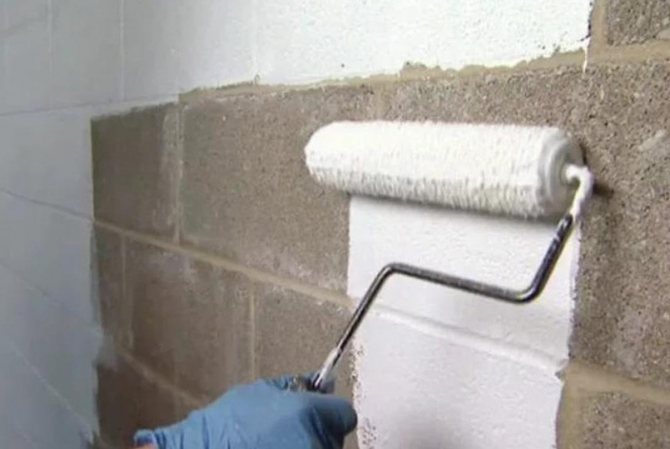

Application of thermal insulation paint for the exterior walls of the house
As a result, a thin finishing layer is obtained in the form of a polymer film saturated with ceramic microgranules, which is ready for coloring or other decorative finishing. But do not forget that this is only additional thermal insulation and the most economical option for covering the walls with insulation that does not reduce such necessary centimeters of the usable area of the limited space of rooms.
A multi-layer coating can reach 6 mm and this is enough to reduce heat loss, block the "cold bridges", eliminate foci of mold and mildew. At the same time, normal air circulation, vapor permeability and a healthy indoor microclimate are maintained. Thermal insulating compounds can not only insulate basements and attics, reduce humidity, prevent mold and fungus growth in basements, but also ennoble walls and ceilings with a light fire-retardant paint layer.


Application of heat insulating pipe paint
Of great importance is the fact that thermal paint serves as protection against fire, minimizing the possibility of ignition of wooden structures, since it begins to char only when the temperature rises above +260 degrees.
Other products in the category wholesale at a favorable price
Textured universal paint GOODHIM FK
Acrylic paint for the facade super white GOODHIM TN
Acrylic facade paint GOODHIM TN M1
View all products in the category
Everyone is familiar with the troubles with condensation formed on cold water pipes, air conditioning and air purification systems, as well as on heating pipes. The resulting condensate becomes the cause of intense corrosion for the pipes, and attempts to heat-insulate the pipelines with the usual mineral wool do not give the desired effect, since the pipes become damp under it too. The correct choice of heat-insulating paint for metal and a high-quality coating in several layers removes the possibility of condensation, thereby stopping the corrosion processes, which means that the pipeline will last much longer.
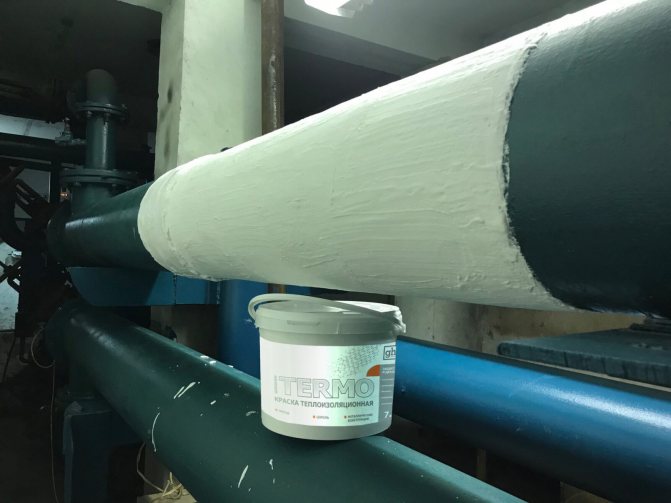

Application of heat-insulating pipe paint
Liquid ultra-thin ceramic thermal insulation is a new word in the segment of materials for protection against heat loss. The unique characteristics of ceramic nano-paint will significantly reduce the cost of operation, heating and air conditioning of premises, while providing a comfortable microclimate. In addition, corrosion protection is provided for heating pipes, hot and cold water supply.
Methods for working with liquid thermal insulation
To reduce paint consumption, surfaces must be perfectly leveled, degreased and primed. The consistency of the paint looks like liquid sour cream or paste, too thick composition can be diluted with water. Liquid thermal insulation is applied in several ways:
- Spray gun.
- Roller.
- With a brush.
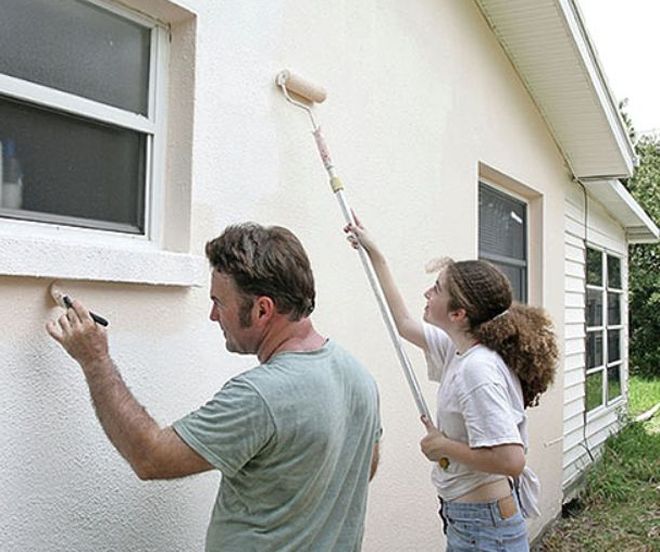

It is better to paint large surfaces with a spray gun, this will allow to even out the layer thickness and reduce paint consumption. For interior painting, it is easier to use a roller, small parts are best painted with a brush.
The minimum layer thickness is 0.4 mm, 2-3 layers are performed on the dried previous layer. liquid heat insulators for wall insulation are environmentally friendly, do not emit harmful substances, are safe, have a flammability group G1 - slightly flammable.


Painting work can be performed at temperatures down to -10 ° C, although a type of heat paint - heat-insulating paint Bronya Zima allows work to be carried out down to -35 ° C.
The compositions can be tinted with acrylic or mineral (depending on the base) pigments in any desired color.
What kind of insulating paint to use outside the house
In winter, a special temperature regime develops with frosts outside and high positive temperatures in the premises. And, if the house is not sufficiently insulated, the “dew point” shifts to the surface of the inner walls. On the plane of the inner surfaces of the walls, the frosty air of the street collides with a warm room, and the wall begins to "sweat", that is, moisture begins to form, which means that dampness appears, especially in the corners, mold, fungus and the general humidity of the air rises. It is good if it is possible to insulate the walls from the inside, but where this is not possible, the solution to the problem will be to insulate the facade.
Important! Heat insulating paint cannot serve as the main insulation, like mineral wool or expanded polystyrene, but it will do an excellent job of removing dampness and all the accompanying troubles from the interior walls and making the air healthier.
The treatment of external walls with heat-insulating paint is incomparable with the complex complex of works on traditional insulation of the "curtain facade" type. Painting with a roller or brush, and on a large area with a spray gun, each homeowner can do it himself.
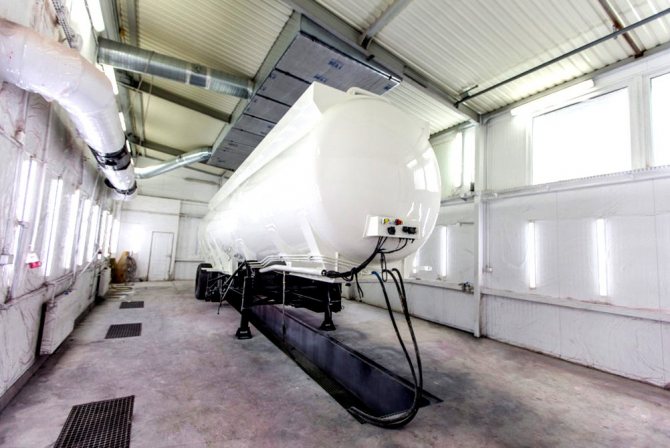

Application of heat-insulating paint in a boiler room
The main thing is to choose a heat insulator suitable for the street among the many proposals of various manufacturers. Facade paint based on acrylic dispersion with ceramic vacuum nanospheres and silicone filler is distinguished by:
- reliable adhesion to concrete, brick, wood, plaster;
- low water permeability;
- high steam conductivity and air exchange;
- frost resistance;
- resistant to UV radiation.
Liquid thermal insulation offered by most manufacturers can be tinted with powder dyes, which is very important for the aesthetics and individuality of private country houses.
The walls of many houses are forced to lay gas pipelines provided by the projects. In order to somehow refine them and protect them from corrosion, they are painted with alkyd or enamel paints, but under aggressive weather conditions, the paint does not last long, and rust continues to corrode the pipes. A long-term protection option for pipes is a special heat-insulating paint, with which they are painted over along with the facade, but it is better when buying thermal paints to choose a special product designed for metal and other external surfaces.
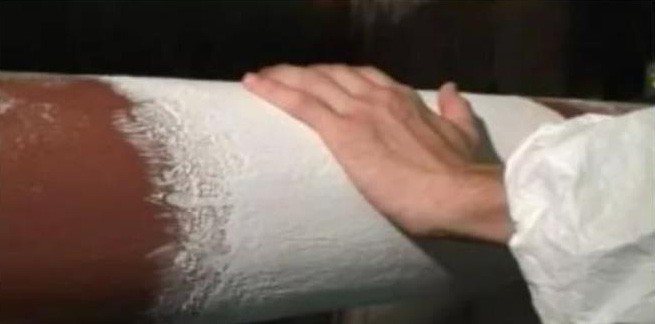

Application of heat-insulating pipe paint
The same paint is perfect for pipelines laid between heating units and houses, since mineral wool insulation does not last long and most often looks very unsightly on main pipes. Treatment with heat-insulating paint of pipes that are constantly exposed to various aggressive influences will protect them from corrosion for at least 12 years, and most importantly, with thermal paint, valves on pipelines can be treated and saved from corrosion.
The value of heat-insulating paint is that it has the ability to reduce heat losses during heating, to protect any wall and under-roof (attic) material from fire, and metal pipes and other elements from corrosion.
Manufacturers and prices
Today it will not be difficult to purchase liquid thermal insulation. And although the material is innovative, most manufacturers are starting to produce it. But what kind of insulation for the walls inside the house is there, in addition to those listed below, the information from the article will help to understand.
Related article: How to quickly grind a wall for wiring
The most proven ones include:
Astratek - 450 rubles per liter;
Armor - 700 rubles per liter;
Corundum - 500 rubles per 1 liter;
Actor - 600 rubles per 1 liter.
It is impossible to give an exact answer to which one is the best.Each of them guarantees getting the desired result, but it all depends on which surface you have to work with and under what conditions.
What are the best thermal insulation materials for the walls inside, the information from the article will help to understand.
But with the help of what materials the walls are insulated from the outside most often, it is indicated in this article.
Perhaps you will also be interested in learning about how do-it-yourself siding lathing with insulation is carried out.
Which facade insulation under plaster is the easiest to make is described in detail in this article.
What are the features of using thermal insulation paint
Heat-insulating paint, which has recently appeared on the insulation market and has already gained certain positions, is easy to use, but has its own specific characteristics. A water-acrylic-based paint with a heat insulator in the form of gas-filled or vacuum ceramic microgranules can have various fillers, which in fact determine the areas of their application, as there is information posted on the buckets of insulation paint. To increase the thermal insulation properties and sound absorption, perlite is added to the composition, and to increase the strength of the coating, fiberglass or foam glass is included in the composition.


Application of heat-insulating paint in a boiler room
With a single processing of the material, a coating with a thickness of 1 mm is formed, but the desired effect is given only by a few layers of paint, forming a heat-insulating coating with a thickness of 6 mm. The coating is applied with a spray gun or roller, and in difficult inaccessible places with a brush. The drying time of each layer is 12 hours, and the finishing layer is 24 hours, after which a strong film is formed that is resistant to mechanical damage. The peculiarity of the heat insulator is that under the polymer protective film there are many ceramic granules that reduce heat loss and reflect the heat flow into the premises.
Important! The performance of a 6mm coating is comparable to that of 50mm mineral wool.
Due to its special physicochemical composition, thermal paint is characterized by increased consumption compared to other paints and varnishes. On well-prepared primed surfaces consumption per 1 sq.m. equals 1 liter with a layer thickness of 1 mm. When processing porous absorbent surfaces, the material consumption increases by 10-20%, which must be taken into account when calculating the amount of purchased liquid thermal insulation.
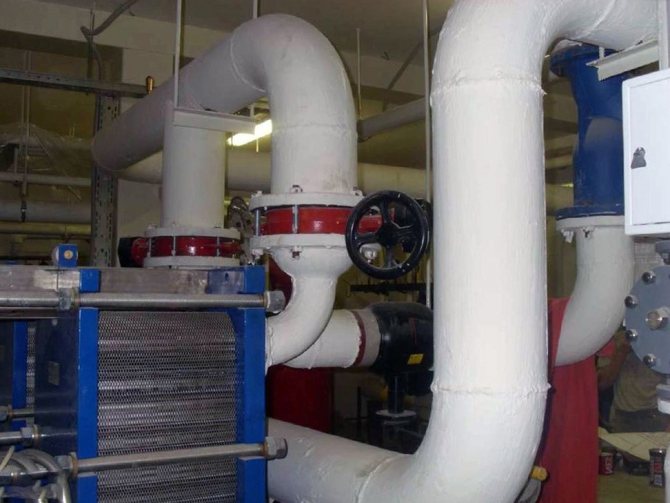

Application of heat-insulating paint in a boiler room
Another feature of heat-insulating paint is the simplicity of work on insulation, which can be easily done with your own hands, the only thing that is required is that the surface is prepared, primed, dried and that the temperature regime is from 8 to 80 degrees Celsius. If all the requirements of the manufacturer and technologies are observed, the thermal paint retains its protective characteristics and its structure for up to 40 years.
The product withstands a wide temperature range from -70 to +260, at which all the declared properties are not lost, and only after the temperature exceeds 260 degrees, the paint begins to char, but does not ignite. Such an important property indicates that the heat-insulating paint reliably protects surfaces from fires.
After the treatment of pipelines with a liquid heat insulator, condensate no longer forms on them, and corrosion processes completely stop, which significantly increases their service life.
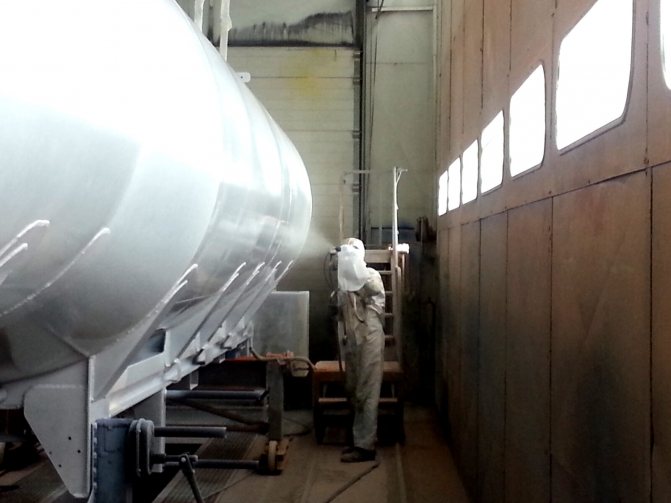

Application of heat-insulating paint in a boiler room
The only drawback of heat-insulating paint can be called the high cost per square meter of coating compared to other insulation materials, but this is conditional, since the same mineral wool is only part of the required set of materials for traditional insulation.In addition to it, it is necessary to purchase bars or metal profiles, roll vapor barrier, fasteners and pay for installation work on facade insulation. While warming with liquid thermal insulation is no more difficult than conventional painting with a spray gun or roller.
Thermal paint application methods
The choice of method depends on the type of surface and operation. Internal work is carried out using a roller, brush. By using these tools, the consumption of ink material is increased. When painting with a roller or brush, the layer is 1 mm thick. The consumption of insulating paint is 1 liter per 1 m2.
The use of a spray gun will significantly reduce material consumption. The coating layer will be evenly distributed, without smudges. Can be applied to any surface. Even on the exhaust pipe of a car.
Who produces quality thermal insulation paints
The production of heat-insulating paints was mastered at the beginning of the 2000s, and today a number of serious industrial enterprises are already producing their own lines of thermal paints. Some companies produce only one universal type of paints that can be used for insulation of internal walls, facades and plinths, as well as for insulation and corrosion protection of pipelines. A number of enterprises produce thermal paints only for a specific purpose for use in a specific area of insulation, but there is no doubt about the quality of all these products.
Table. Leading manufacturers of thermal insulation paint
| Firm | Insulation paint name | Features of the |
| GOODHIM (Russia) | GOODHIM TERMO | Universal heat-insulating paint designed for insulation and protection of facades, plinths, as well as protection against condensation and corrosion of heating pipes, hot and cold water supply. Suitable for indoor wall covering, protects against heat loss. Consumption of 1 liter per 1 sq.m. Packaging in 5 and 10 liter buckets (3.5 and 7 kg) |
| CORUNDUM (Russia) | CORUNDUM | Ultra-thin heat-insulating paint is available in three modifications: Classic - to protect walls and internal pipelines from heat loss. Facade - to retain heat, protect against freezing, condensation, fungus, mold Facade Lotus - for finishing after processing the walls with the Facade. All modifications are characterized by high vapor permeability and do not impede air circulation. Packing in buckets of 5, 10, 20 liters. |
| VGT (Russia) | HEAT BARRIER VDAK 1180 | Thermal paint for thermal insulation of facades, interior walls with disinfection mode. To reduce heat loss, protect against condensation and corrosion of cold, hot water supply and heating pipelines inside and outside buildings. Do not process surfaces in contact with food and drinking water. Packaging in containers of 2 and 9 liters. |
| INNOVATIVE TECHNOLOGIES (Russia, Kazan) | RE-THERM | Modifications are made Standard, Inhibitor, Antifreeze, Vertical, Frost Each of the modifications has special fillers that allow the use of thermal paint in different conditions and on different surfaces. They are designed for thermal insulation, protection against corrosion, mold and mildew formation, fire protection, use in extremely high temperatures. Packing buckets 3, 10, 20 liters |
| AKTERM ( Russia) | AKTERM | Produced in different modifications: Standard, Anti-condensate, Metal, Concrete (facade), Nord, Volcano, NG (non-combustible) High quality thermal paints designed for use in different conditions and for different surfaces. Universal thermal insulation paint Standard is suitable for reducing heat loss, protecting against condensation, corrosion, mildew and mildew. The rest of the modifications have their own specific application. Packaging plastic, metal buckets of 3, 5, 10, 20 liters |
| PROMSNAB (Russia) | BARRIER | The company produces modifications of liquid heat-insulating paint: Standard, Facade, Anticondensate, Anticor, Nord. Standard paint is universal, protects against heat loss, mold and mildew, condensation and corrosion on pipes, reduces humidity in rooms. The rest of the modifications are designed for the processing of certain surfaces and metal products. Packing in buckets of 10, 20 liters. |
Note: In addition to the companies indicated in the table, many more Russian companies produce heat-insulating paint, their products also do not differ from European counterparts and have proven their quality and efficiency. But, unfortunately, we have to note that there are a lot of fakes on the market now, so when choosing, you need to carefully check the offered thermal paint, buy only from trusted retail outlets and from trusted manufacturers, confirming their name with quality certificates.
Functional features


A variety of warm paint is conventionally divided according to two characteristics:
- by composition: acrylic or water base;
- by area of application: for indoor work, for pipes, facade - exclusively for outdoor work.
Thermal insulating paints for work inside
For work inside buildings, both acrylic and water-based compositions are suitable. An important task is to determine the functional load, as well as to study the composition in which toxic components should not be present. For processing pipes, heating mains, gas pipelines indoors, use paint for interior work, preferably on an acrylic basis, and for painting cold walls, you can use a water-based composition.
Insulating paints for outdoor work
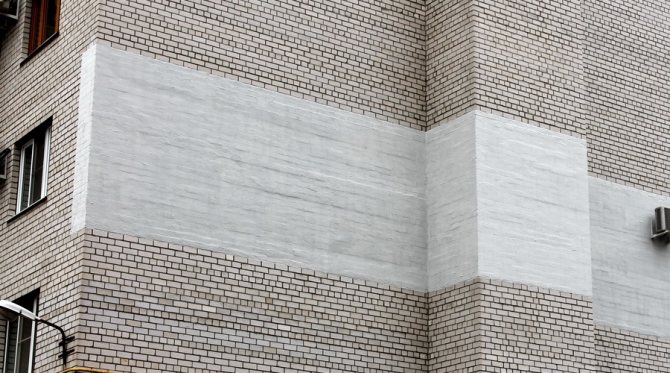

For work outside, it is necessary to choose heat-insulating materials, taking into account the functional characteristics of the surface and environmental conditions (humidity, frost, sunny side). It is better to choose a mixture with the minimum water resistance and the highest vapor permeability, so that heat will be retained and the treated surfaces will not deteriorate.
Main manufacturers
Minimizing heat loss is the task of most people who do not want to spend money on paying endless bills. The production of such materials is relatively new, but today there are leaders on the market in terms of quality and price:
Advantages and disadvantages of thermal insulation with facade paint
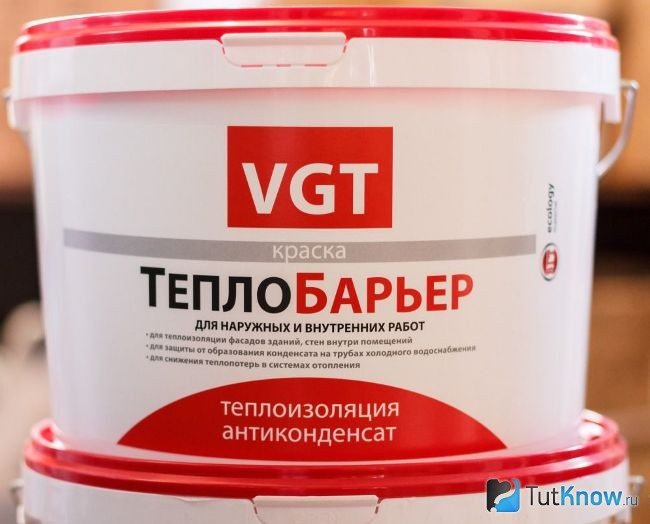

Thermal insulation with facade paint is suitable only outside the house, but at the same time it is able to compete with conventional insulation, since it has the following advantages:
- Coating resistance to ultraviolet rays and precipitation;
- Durability and low thermal conductivity;
- High adhesion, water resistance and corrosion resistance of the coating;
- The minimum amount of physical effort when carrying out work on thermal insulation;
- A high level of safety in case of fire - charring of dried paint for thermal insulation of walls occurs only at a temperature of + 260 ° C;
- Simple processing of sections of the facade that are difficult to access for insulation with other materials;
- Minimum load on the foundation - the paint coating weighs very little;
- Environmental safety - the material is absolutely neutral;
- Ease of repairing any damaged area of the paint thermal insulation coating.
The disadvantages of using paint insulation for the facade are the limited properties of the coating. In a heated, sealed and draft-proof room, such insulation of the outer walls can significantly increase the degree, but in most cases it is not the only and main insulation. At the same time, the price of paint for insulating walls from the outside is quite high, and its consumption is very significant.
Evaluation of paint efficiency
Experts' assessments of thermal insulation paint are mixed.
On the one hand, long-standing disputes have not yet completely subsided, when, under the guise of "miracle remedies", formulations were advertised and sold, the quality of which left much to be desired. And there are still adherents of this point of view who believe that this is a deception and is technically impossible.
On the other hand, technologies are developing and new components are constantly being developed to improve the performance of thermal insulating paints. Moreover, both in terms of thermal conductivity and in relation to other characteristics. Of course, the chances are that the numbers in the ads are slightly exaggerated.
Considering both opinions, it can be concluded that the truth is somewhere in between. The characteristics of insulating paint are not unique, but may well help out in certain situations.
